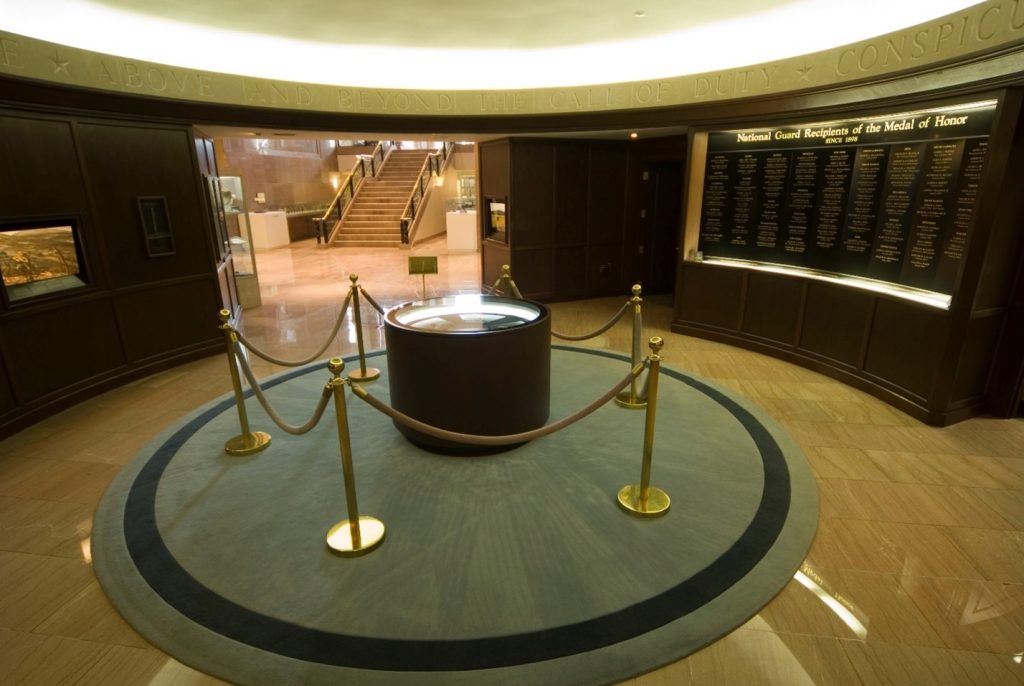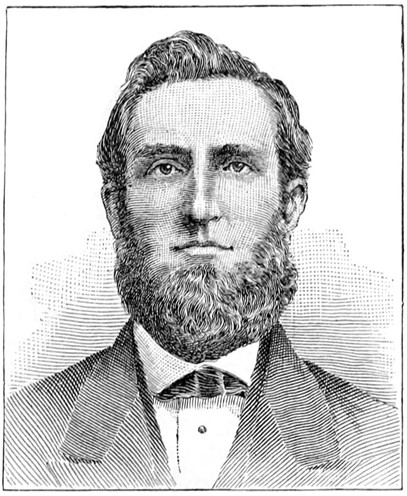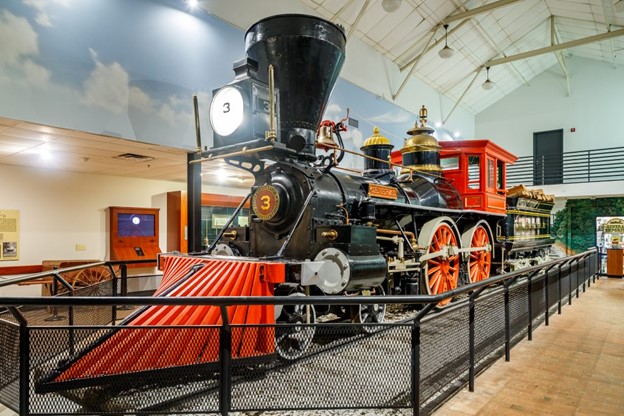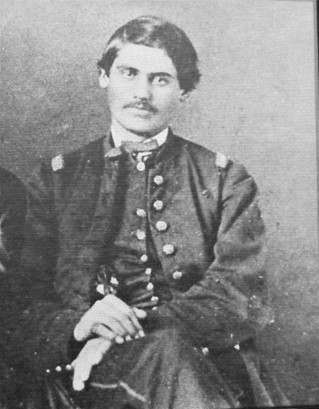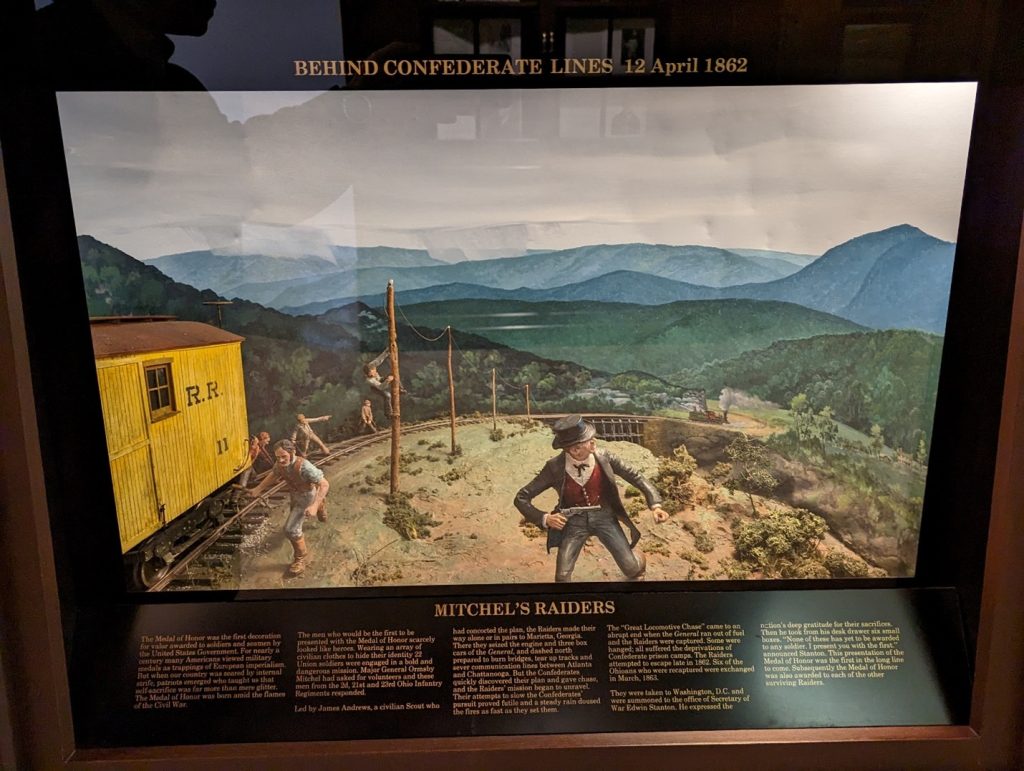By Will Roulett
Visitors to the National Guard Memorial Museum have probably walked through the Medal of Honor Gallery. It is a tribute to 147 Guardsmen who received the Medal since 1898. However, the Medal of Honor was first presented on March 25, 1863, to six of the surviving members of Andrew’s Raiders. Their exploits are also known as the Great Locomotive Chase.
Medal of Honor Gallery at the National Guard Memorial
(Courtesy of the NGEF Collection)
Central Tennessee in April of 1862 was swarming with Union and Confederate forces. Confederates had been forced to abandon Nashville and Union General Ormsby M. Mitchel had his sights set on Chattanooga. Mitchel’s movement towards capturing Chattanooga included seizing over 100 miles of railroad. Before closing in on Chattanooga, he authorized an unconventional raid deep into enemy territory that, if successful, would cripple the Confederate ability to reinforce Chattanooga.
James J. Andrews
(Courtesy of Daring and suffering: 1887 by William Pittenger)
James J. Andrews had done some spying and scouting for Major General Don Carlos Buell., Andrews proposed to lead a group of volunteers deep into enemy territory in April 1862 to steal a locomotive. They could ride north from there to Chattanooga, cutting telegraph lines, tearing up tracks, and burning bridges all along the way. Mitchell approved the plan because it was bold and risked the lives of only a few Union soldiers.
Andrews recruited 22 soldiers from the 2nd, 21st, and 33rd Ohio Volunteer Infantry Regiments for the mission. Andrews, fellow civilian William Hunter Campbell, and the 22 men were to depart on April 7, travel in twos and threes, dressed as civilians, and meet in Marietta, Georgia. The volunteers were not deterred by the fact that soldiers captured wearing civilian clothes could be hanged as spies. Four men were captured or overslept missing their trains along the way. The remaining men were in place and ready to put the plan into action by April 12, 1862.
The party boarded a Northbound train on the morning of April 12th at Marietta. In 1862, trains made frequent stops for water and fuel where passengers had the chance to disembark for a meal. Big Shanty (present-day Kennesaw, Georgia) was one such stop and of note because there were no telegraph lines there. Andrews and his raiders planned to use this opportunity to steal the train and be on their way before Confederate forces further down the tracks could be alerted. And that is exactly what they did when they hijacked the General, which is on display today at the Southern Museum of Civil War & Locomotive History in Kennesaw, Georgia.
The locomotive the General today.
(Courtesy of the Southern Museum)
The Confederate pursuit of Andrew’s Raiders began with the General’s conductor, William Fuller, and others chasing the train on foot. He eventually acquired a handcar and then a series of locomotives as he chased after the Raiders. The Raiders were delayed multiple times due to oncoming trains. Fuller and the growing party of pursuers were delayed by the sections of track Andrews’ men had removed. However, they commandeered the locomotives Yonah, the William R. Smith, and finally the Texas in their pursuit of the General. The Texas is currently on display at the Atlanta History Center.
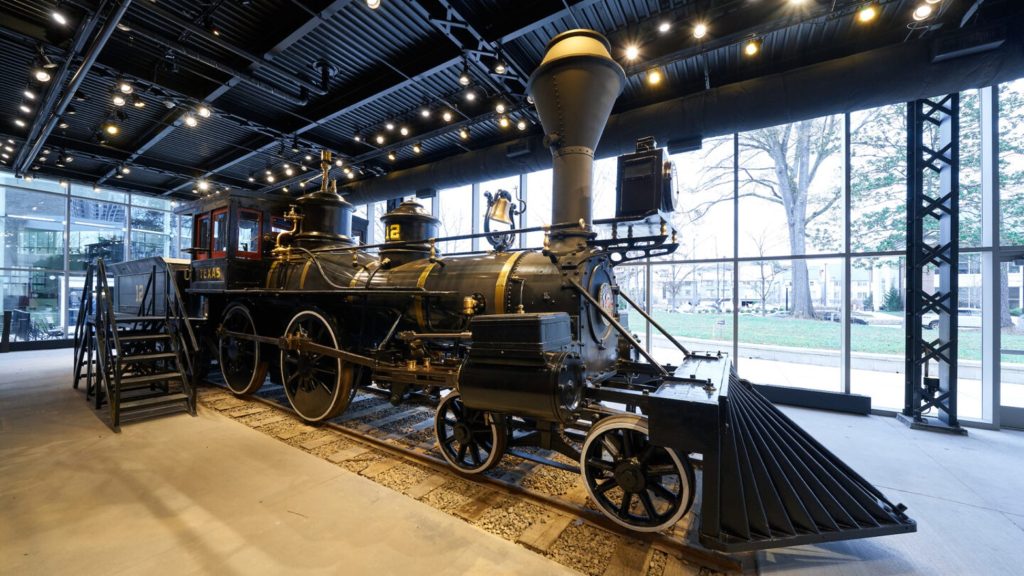
The locomotive the Texas today.
(Courtesy of the Atlanta History Center)
The Raiders attempted to slow the Texas by releasing two of the General’s boxcars and setting fire to the last boxcar on the bridge of the Oostanaula River. However, the bridge, damp from rain, failed to ignite and the pursuers failed to slow. The Confederates were too close on their tracks to affect anymore damage or allow them to refuel. The General ran out of fuel less than 20 miles from Chattanooga and Andrews and his men scattered into the woods. All were captured within two weeks and Mitchel failed to take Chattanooga.
Eight of the men, including Andrews, were tried as spies and hanged. Fearing the same fate, the remaining Raiders attempted to escape. Six of them were recaptured, including Private Jacob Parrott of the 33rd Ohio’s Company K. Once again in captivity, Parrott was beaten over 100 times by Confederates trying to extract information. Finally, in March 1863, Parrott and the remaining prisoners were exchanged.
Private Jacob Parrott
(Courtesy of the Congressional Medal of Honor Society)
Jacob Parrott has the distinction of being the very first recipient of the Medal of Honor. It was presented to him and the five other Raiders who had been freed by the recent prisoner exchange. 19 of the 22 Union soldiers who volunteered for the raid were eventually presented with the Medal. Their citations read “One of the 19 Medal recipients from a group of 22 men who, by direction of Gen. Mitchell (or Buell), penetrated nearly 200 miles south into enemy territory and captured a railroad train at Big Shanty, Ga., in an attempt to destroy the bridges and track between Chattanooga and Atlanta.”
Next time you visit the National Guard Memorial Museum, you can take a moment to reflect on the selfless dedication of heroes of the National Guard like Parrott. Our Medal of Honor Gallery features depictions of six Medal of Honor actions taken by Guardsmen.
(Mitchel’s (Andrews) Raiders)
Courtesy of the NGEF Collection.
